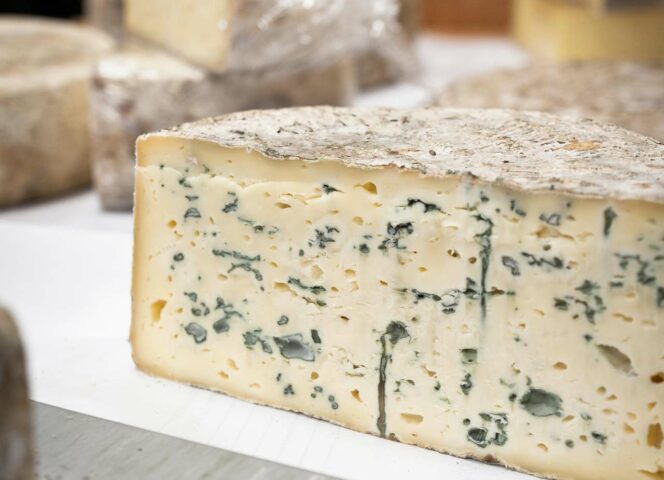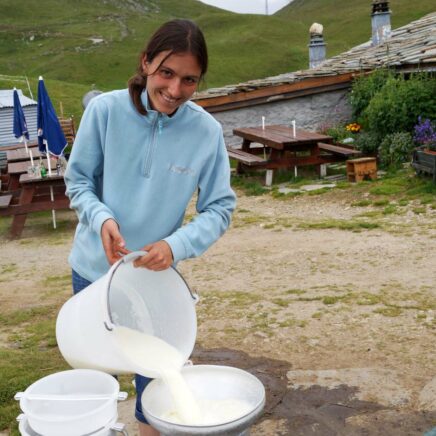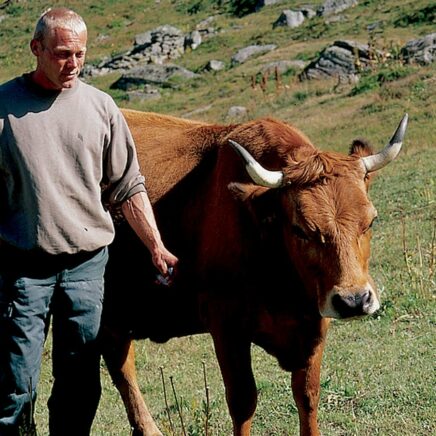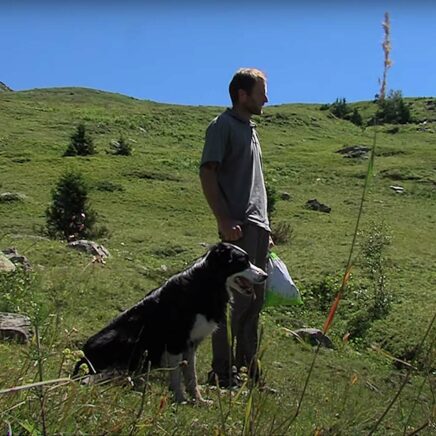Agriculture and Beaufort PDO
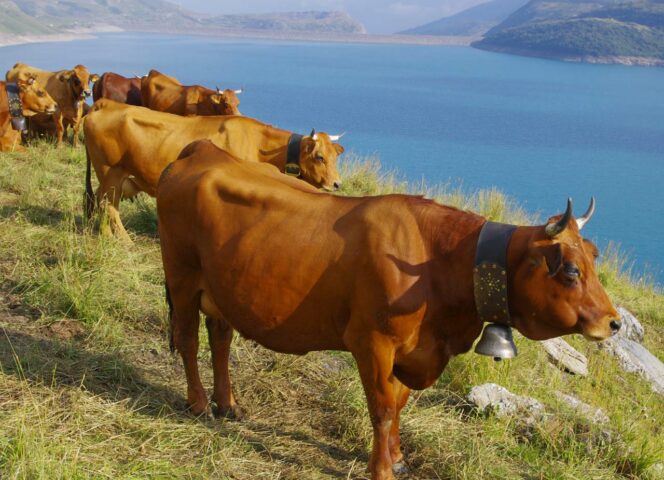
Farming in Aussois
Milk, cheese, honey...In the last century, there were few families who didn't have animals - cows, goats or sheep. Housing was built around agricultural life, a story to be discovered at l'Arche d'Oé.
Today, agriculture is still very much alive at Aussois and Haute Maurienne Vanoise. Most farmers supply the milk used to make Beaufort cheese, nicknamed "the prince of Gruyères". This cheese has had a Protected Designation of Origin (PDO) since 1968. Local milk is also used to make Bleu de Bonneval sur Arc, butter and yoghurts, all of which can be purchased from the Coopérative laitière sales outlets at Haute Maurienne Vanoise, including Aussois in the heart of the village.
Herds of sheep and cows graze at altitude throughout the summer, helping to maintain the landscape. In summer, you'll come across them hiking along the Rateau d'Aussois. In spring and autumn, the cows are closer to the village, where the meadows benefit from an ancestral irrigation system: for centuries, water has been collected from the torrents and transported to the meadows via canals and wooden pipes. A traditional system that is still used, maintained and renovated.
Among other local products, you can taste the local honey and even visit the honey house in summer and winter, as well as the beers of the Brasserie d'Oé, brewed in the heart of the village with water from the Vanoise.
At Haute Maurienne Vanoise, a number of alpine farms welcome you to discover their hard but beautiful lives, and the products they are proud of. Farmers will be happy to tell you all about their work, milking, haymaking, calving, patous, wolves...
The cows
Tarines and AbondancesAt Aussois and Haute Maurienne Vanoise, a large proportion of the cows' milk is processed into Beaufort, an exceptional cheese that provides a fair return for the work carried out by the farmers.
Beaufort cheese is made to strict specifications. Milk can only come from two breeds of Alpine cows: Tarine and Abondance.
Tarine has a uniformly fawn-brown coat, black mucous membranes, and black muzzle and eye rims. Its lyre-shaped horns are white with black tips. 1.30 m at the withers for 600 to 800 kg. A magnificent cow whose natural "make-up" enhances her beauty.
Abondance has a mahogany-red coat, matching "glasses", mask, belly, tail and white leg tips. 1.30 m at the withers, weighing 600 to 700 kg. With its two colors, it's easy to spot in a herd of Tarines.
These are hardy mountain breeds. Cows spend many months outdoors in mountain pastures, unaffected by the weather. Good walkers, they are strong and robust.
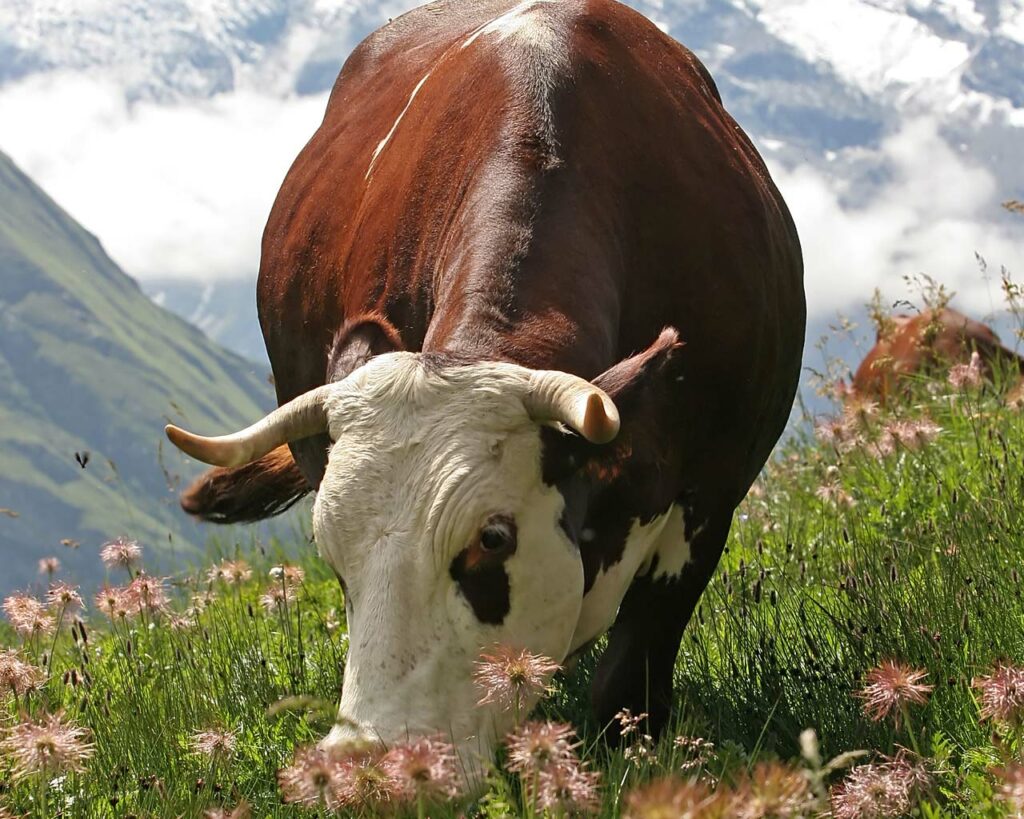
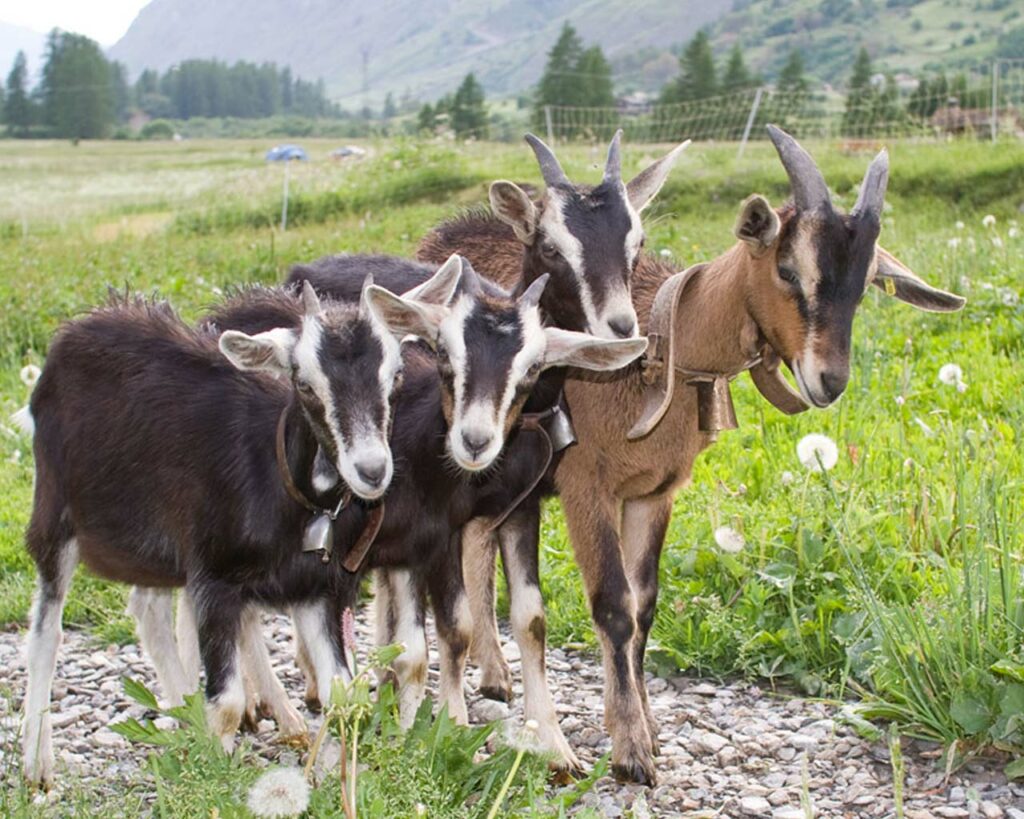
The goats
The goats you'll come across at Aussois are most often of the Alpina breed, which originated in Savoie. They are easily recognized by their buff-colored coat. A stocky, sturdy animal, Alpina goats have good dairy qualities and a great sense of adaptation to altitude and its sometimes harsh climatic conditions.
The sheep
Herds and patous: a few reflexes to adoptSheep at Aussois and Haute Maurienne Vanoise are often of the Thônes and Marthod breeds. Their main quality is their resistance. They spend 3 to 4 months at liberty in the highest pastures, and are the best allies for landscape and alpine pasture maintenance.
With their spiral horns, white coat and black muzzle and "glasses", they're simply magnificent. But... don't approach them to take a photo! They're jealously guarded by patous, the protection dogs charged with ensuring their safety. These patous dogs will bark if they see you coming towards the herd. In this case, stop, stay calm and turn back without making any sudden movements. Generally speaking, when you see a flock of sheep, go well around it and keep your distance. If you have a dog (they are not allowed in the heart of the Parc national de la Vanoise), keep it on a leash. If you're on a mountain bike, dismount and walk alongside.
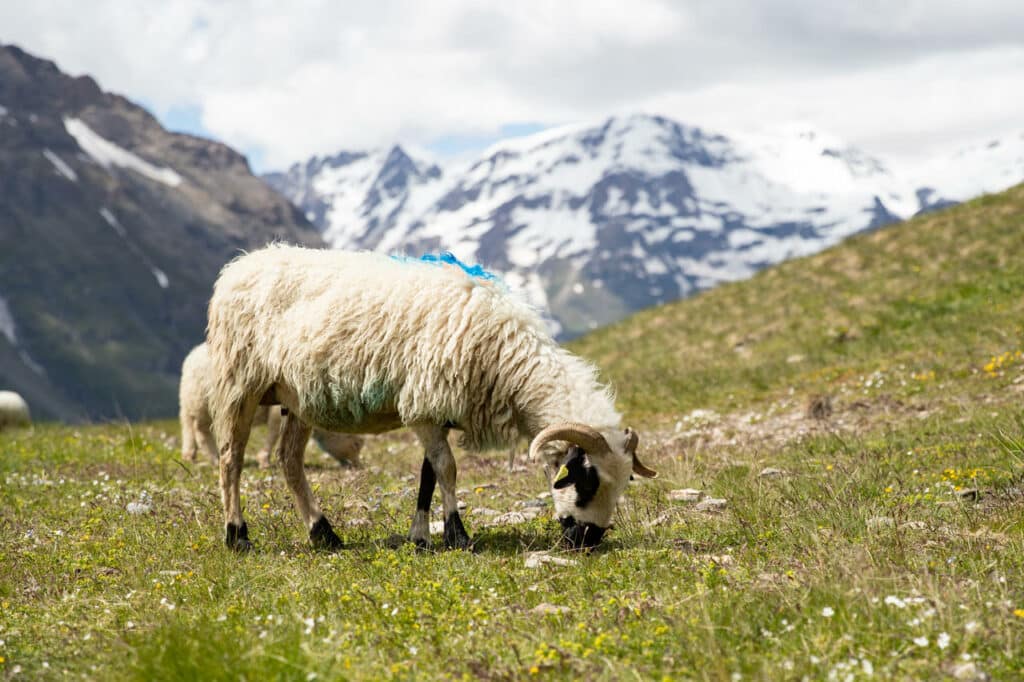
Passionate men and women
to offer you the best

Double-active
Maybe your ski instructor is also a farmer!At Aussois, and in the other resorts of Haute Maurienne Vanoise, farmers are often double-active. They look after their livestock and their farm, and they also have a second job, often linked to tourism: ski instructor, ski patroller, mountain leader...
This particularity is also reflected in the local school curriculum: the vocational high school in Saint-Michel de Maurienne, the closest high school toAussois, offers dual training courses for high school students (a "winter" job related to tourism and a "summer" job related to the building trades).
La Coop
Dairy cooperative Haute Maurienne VanoiseA collective system created in 1954, the Lanslebourg cooperative merged between 1966 and 2008 with the cooperatives of the other villages to form the agricultural unit represented by the Coopérative Laitière de Haute-Maurienne Vanoise.
Today, it is owned by 40 farmers. They entrust the professionals at their Cooperative with milk collection, processing into Beaufort PDO or Bleu de Bonneval, and cheese maturing and marketing.
Take advantage of your stay at Aussois to visit the cooperative in Val Cenis-Lanslebourg (20 minutes by car). You can discover the magnificent maturing cellars and watch Beaufort being made in the morning. A sensory experience for all the family!
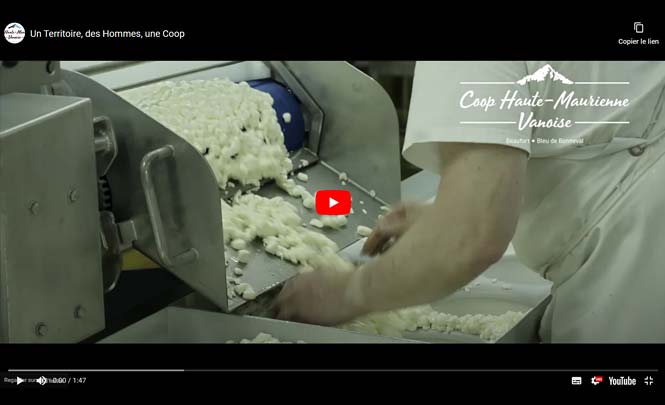
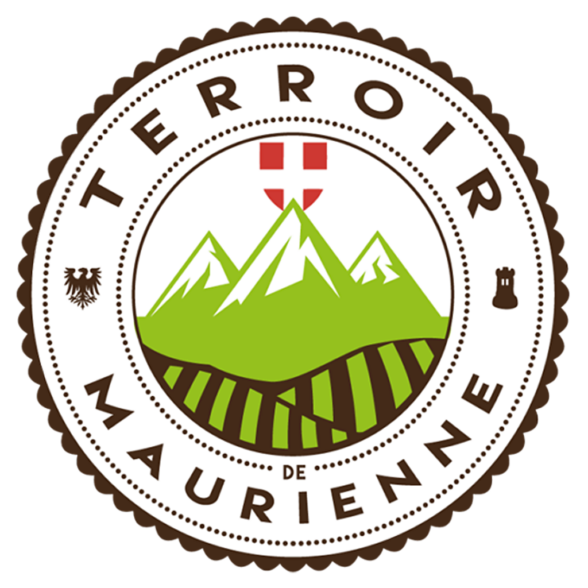
Do you miss the Haute Maurienne and its culinary riches? From the comfort of your home, place your order via the Terroir de Maurienne and receive the delicious products you enjoyed during your vacation in our villages!
A showcase for the valley's farmers and craftsmen, their know-how and their work, Terroir de Maurienne is a way for these producers to promote their products in a short circuit.
An ethical charter common to all members of the project guarantees that production is carried out according to the rules and with respect for the environment and the territory.
- Time-limited milk storage
- Maturation of milk with ferments to develop lactic acid bacteria
- Renneting and curdling, which transform milk from a liquid to a solid state.
- Decanting to separate solids from whey
- Stirring and heating to drain the curd grains
- Moulding into curd grains
- Pressing and turning remove the serum from the cheese
- Salting with brine or dry salt
- Refining, the crucial stage that gives products their character
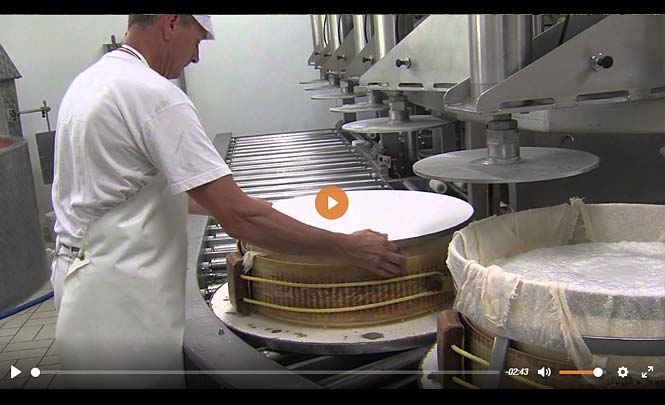
The cheeses
Le BeaufortAlso known as the "Prince of Gruyères", Beaufort is made from whole, raw milk. Since 1968, it has benefited from the Appellation d'Origine Contrôlée label, which imposes very strict specifications, including regular checks on milk producers and a minimum maturing period of 5 months.
It comes in the form of a wheel weighing around 40 kg, 11 to 16 cm high and 35 to 75 cm in diameter, with a concave heel. Its paste is smooth, ivory to yellow in color, and initially firm on the palate, then melting.
11,000 wheels of Beaufort cheese are produced every year by the Cooperative de Haute Maurienne Vanoise. Each one is made on site at Val Cenis-Lanslebourg with the 5 million liters of milk collected annually from Modane to Bonneval sur Arc. Summer Beaufort and Winter Beaufort delight the taste buds of even the most discerning gourmets!
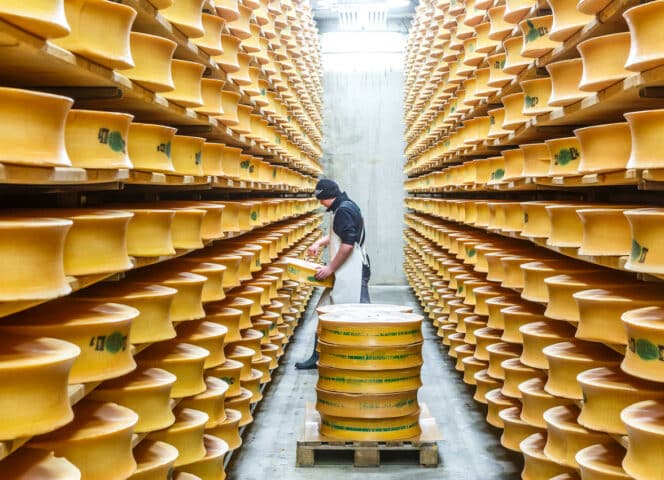
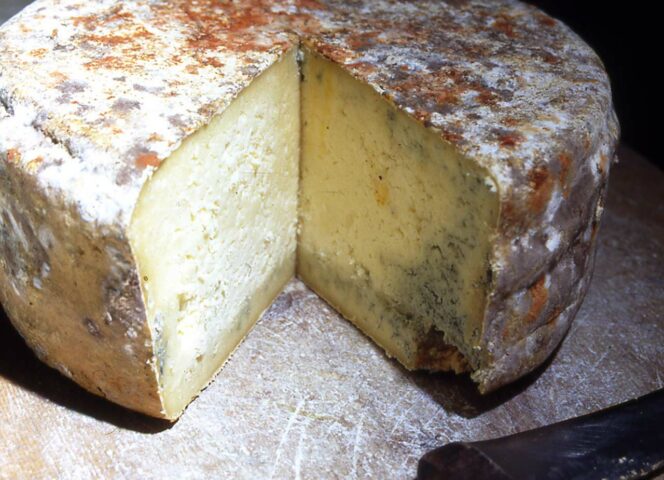
Termignon blue
Bleu de Termignon is so rare that it's often sold before it's even made! This mild, blue-veined cheese with a natural rind is produced exclusively in the Val Cenis-Termignon mountain pastures, from the milk of herds of Tarine cows grazing at altitudes of over 2,500 m during the summer.
It takes the form of a cylinder weighing around 30 kg, 30 cm in diameter and 15 cm high.
Made from sour curds mixed with daily curds, it is matured for 4 to 5 months.
Le Bleu de Bonneval sur Arc
Bleu de Bonneval sur Arc is both firm and creamy. This cheese is made from the milk of cows fed on mountain pastures.
Maturation in the cellars (3 months minimum) gives it an incomparable taste, the freshness and character of the high mountains.
30,000 pieces, each 20 cm in diameter, 10 to 20 cm high and weighing around 2.5 kg, are produced each year.
It is a registered trademark of the Coopérative de Haute Maurienne Vanoise
